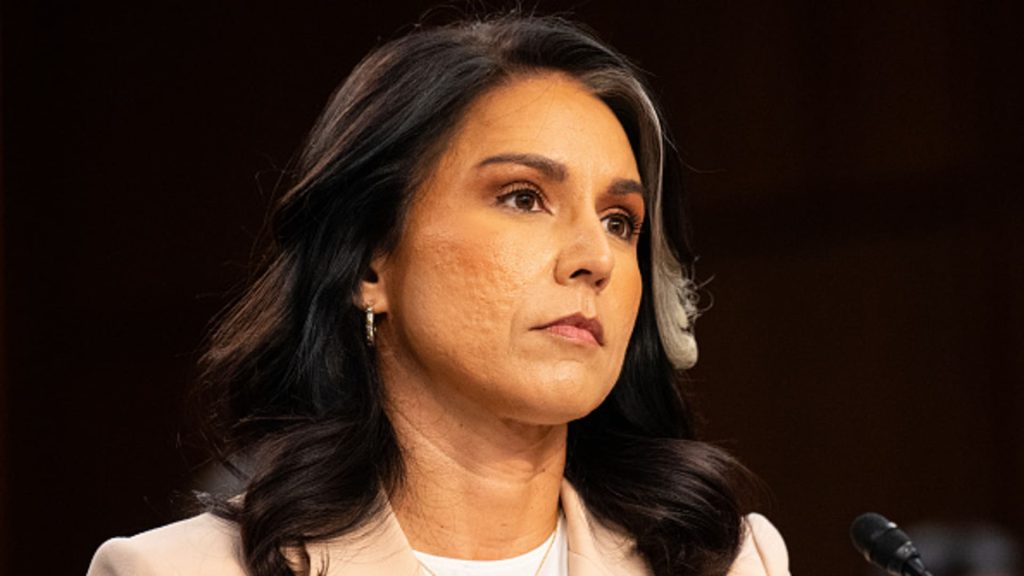In a significant shift to customize intelligence briefings for President Donald Trump, the Director of National Intelligence, Tulsi Gabbard, is exploring new methods to enhance the President’s Daily Brief (PDB). Reports indicate that Gabbard is considering a more visually engaging format, possibly modeled after popular news broadcasts, to address Trump’s unique preferences for consuming information. This initiative comes amid ongoing discussions about the presentation and content of intelligence briefings, reflecting the broader complexities of aligning national security information with the President’s expectations.
| Article Subheadings |
|---|
| 1) Reasons for Revamping the Briefing Process |
| 2) Historical Context of the President’s Daily Brief |
| 3) Proposed Changes and Their Implications |
| 4) Concerns Over Political Bias in Intelligence |
| 5) Looking Ahead: Potential Outcomes of Reforms |
Reasons for Revamping the Briefing Process
The move to revamp the intelligence briefing comes as Trump‘s preferences for information consumption become increasingly apparent. According to sources familiar with the discussions, Gabbard aims to address Trump’s evident skepticism towards traditional intelligence methods and enhance his trust in the briefings. The intelligence community has observed that Trump is less inclined to read lengthy reports, prompting a shift towards more visual formats that resonate with his viewing habits. This change is not merely about aesthetics; rather, it seeks to ensure that critical intelligence remains accessible and relevant, aligning with the President’s communication style and decision-making processes.
Historical Context of the President’s Daily Brief
Established in 1946, the President’s Daily Brief has traditionally served as a comprehensive summary of national security intelligence, delivered to the sitting president and key advisors. Historically, this briefing has undergone adjustments to cater to the preferences of different presidents. For instance, during President Barack Obama‘s term, the PDB became more visual, while under President Biden, it has incorporated timely topics such as climate change and gender issues. Compared with past administrations, Trump has received the PDB less frequently—averaging less than once a week, a stark contrast to his predecessors. Observations indicate that Trump’s approach reflects a broader trend of personalization in presidential briefings, necessitating modifications to ensure relevance and engagement.
Proposed Changes and Their Implications
In a groundbreaking proposal, discussions have included the possibility of converting the PDB into a visually engaging broadcast akin to a Fox News program. Insights from those involved suggest that utilizing familiar media formats could enhance the President’s comprehension of critical issues. One intriguing aspect includes interactive elements, such as animated graphics and maps portraying intelligence data in an engaging manner. Though some officials view this prospective change as innovative, others raise eyebrows regarding its appropriateness and seriousness, fearing it may undermine the gravity of national security discussions.
Concerns Over Political Bias in Intelligence
Amid these proposed changes lies an undercurrent of concern regarding the potential politicization of intelligence. Critics have voiced apprehension that Gabbard’s initiatives could align intelligence reporting with Trump’s political agenda, thereby jeopardizing the integrity of impartial analysis. References to recent firings of senior officials who contradict the administration’s narrative have heightened these concerns. Some lawmakers have emphasized that intelligence assessments should be objective, warning that analyses could be tainted by political motivations. This ongoing debate points to a fundamental tension within the intelligence community: the need for accurate reporting versus the desire for alignment with presidential preferences.
Looking Ahead: Potential Outcomes of Reforms
In the wake of these discussions, the broader implications of reforming the PDB remain uncertain. While more engaging presentations may increase Trump’s receptivity to intelligence, there are fears that it could diminish the gravitas of the PDB. As Tulsi Gabbard continues to navigate these transformative efforts, her success will depend on balancing the President’s preferences with the necessity for unbiased and accurate intelligence reporting. This delicate equilibrium will be critical in ensuring that national security remains the foundation of U.S. intelligence efforts, free from political coloration.
| No. | Key Points |
|---|---|
| 1 | The Director of National Intelligence, Tulsi Gabbard, is exploring revamping the President’s Daily Brief to enhance its alignment with Trump’s preferences. |
| 2 | Historical analysis shows that President Trump has received fewer PDBs compared to his predecessors in their first year in office. |
| 3 | Proposals to change the format of the PDB include creating video briefings that are more visually engaging and interactive. |
| 4 | Concerns persist that the reformation process might lead to the politicization of intelligence within the Trump administration. |
| 5 | The ultimate goal of any changes is to ensure that intelligence briefings remain relevant and significant for the President’s decision-making process. |
Summary
The potential overhaul of the President’s Daily Brief represents a crucial point of reflection for U.S. intelligence. As Tulsi Gabbard spearheads discussions to tailor these briefings according to President Trump’s preferences, the interplay of personalizing intelligence with the essential need for objective reporting will be pivotal. This undertaking underscores the challenges faced by national security agencies in adapting to the evolving demands of presidential leadership while ensuring the integrity of intelligence remains intact.
Frequently Asked Questions
Question: What is the President’s Daily Brief (PDB)?
The PDB is a daily summary of national security intelligence prepared for the president and key advisors, providing updates on current and emerging threats.
Question: Why are changes being considered for the PDB format?
Changes are being considered to enhance engagement and understanding, particularly as President Trump prefers visually-oriented information rather than lengthy written reports.
Question: What concerns have been raised regarding the potential changes to the PDB?
Concerns include the possibility of politicizing intelligence, affecting the objectivity of assessments, and prioritizing alignment with political agendas over unbiased reporting.
